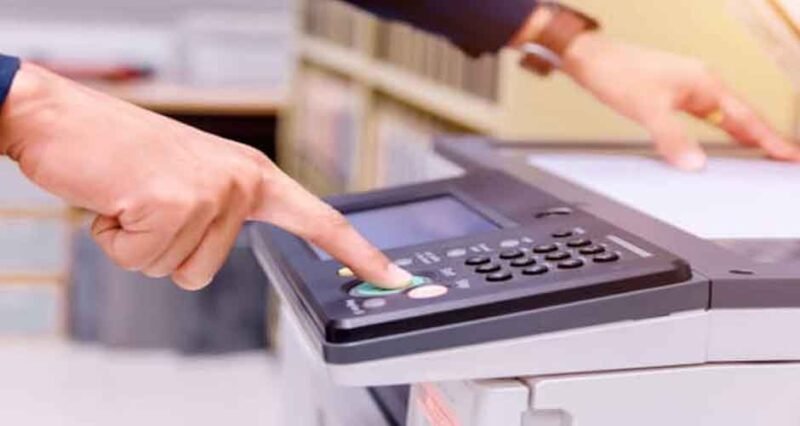
Large format printers in engineering settings require regular upkeep to prevent downtime and maintain print quality. Printer maintenance is critical for ensuring optimal performance and longevity, especially for high-performance printers designed for engineering applications, like HP printers for an engineer. This article provides expert tips on its maintenance to help engineers maximize the lifespan and efficiency of their printing equipment.
Routine Cleaning and Inspection
Routine cleaning and inspection are fundamental aspects of printer maintenance to prevent the buildup of dust, debris, and ink residues that can affect print quality and performance. Engineers should regularly clean the exterior and interior components using manufacturer-recommended cleaning solutions and tools. Regular inspections allow engineers to identify and address any potential issues or worn-out parts before they escalate into major problems. By incorporating routine cleaning and inspection into their maintenance regimen, engineers can prolong the lifespan of their printers and ensure consistent, high-quality prints, optimizing their investment in printing equipment.
Optimizing Ink and Toner Usage
Optimizing ink and toner usage is essential for minimizing operating costs and reducing environmental impact. Engineers can maximize efficiency by selecting the appropriate print settings, such as draft mode or grayscale printing, for non-critical documents or internal use. Configuring print queues to prioritize black-and-white printing over color can help conserve color ink or toner cartridges. Regularly calibrating printers and performing color management adjustments ensures accurate color reproduction and minimizes ink or toner waste. By adopting these strategies, engineers can reduce printing expenses and contribute to sustainability efforts by minimizing ink and toner consumption, thus promoting eco-friendly printing practices.
Maintaining Print Heads and Nozzles
Print heads and nozzles are critical components of inkjet printers that require regular maintenance to ensure optimal print quality and reliability. Engineers should perform periodic print head cleanings and nozzle checks to prevent clogs and ensure consistent ink flow. Engineers can use specialized cleaning solutions or tools to unclog print heads and restore print quality if clogs occur. Additionally, replacing worn-out or damaged print heads and nozzles promptly can prevent further damage and ensure uninterrupted operation. By integrating print head and nozzle maintenance into their routine upkeep, engineers can extend the longevity of their printers and reduce instances of print quality problems, thus guaranteeing sustained effectiveness and efficiency in their printing operations.
Managing Paper and Media
Managing paper and media is essential for preventing paper jams, misfeeds, and other printing errors that can disrupt workflow and damage the printer. Engineers should use high-quality paper and media compatible with their printers’ specifications to minimize the risk of jams and ensure optimal print quality. Additionally, storing paper in a clean, dry environment and using proper handling techniques can prevent paper from becoming warped or damaged, affecting print quality and reliability. Regularly cleaning paper trays, rollers, and feed mechanisms helps prevent dust buildup that can lead to feeding issues. By implementing proper paper and media management practices, engineers can uphold seamless printing operations and extend longevity, thereby guaranteeing consistent and dependable performance to meet their printing requirements.
Updating Firmware and Drivers
Updating firmware and drivers is essential for ensuring compatibility, performance, and security enhancements. Engineers should regularly check for firmware and driver updates offered by the manufacturer and install them promptly to optimize performance and address any known issues or vulnerabilities. Additionally, keeping printer drivers up to date ensures compatibility with the operating systems and software applications used in engineering environments. By staying current with firmware and driver updates, engineers can ensure that their printers operate reliably and securely, reducing the risk of downtime or security breaches. This proactive approach to firmware and driver management helps engineers maintain optimal performance and protect their printing investments, ensuring continued efficiency and productivity in their engineering workflows.
Implementing Regular Usage
Regular usage is crucial for maintaining the health and performance of large-format printers. Printers are designed to be used regularly, and periods of inactivity can cause issues such as clogged print heads or dried-out ink cartridges. Engineers should aim to use their printers consistently, even if it means printing a few test pages or maintenance prints periodically. Regular usage keeps the ink flowing smoothly through the print heads prevents ink from drying out and ensures that all components remain in good working condition.
Conclusion
In conclusion, printer maintenance is essential for maximizing the lifespan, efficiency, and performance of large format printers used in engineering settings, like HP printers for engineers. By incorporating routine cleaning and inspection, optimizing ink and toner usage, maintaining print heads and nozzles, managing paper and media, and updating firmware and drivers into their maintenance regimen, engineers can ensure smooth printing operations and consistent, high-quality prints. By following these expert tips, engineers can increase the lifespan of their printers, minimize operating costs, and ensure optimal performance for their printing needs.


